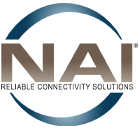
07 Oct What is the Future of Fiber Optics in Medicine?
Medical fiber optics are a vital medical technology used in many medical specialties. The widespread use of fiber optic technology is due to both its structure and function, making medical procedures and diagnoses easier for physicians and patients alike.
Medical fiber optics are chemically inert, sterile, flexible, and non-toxic to the body. In addition, they can be sterilized using the same techniques as other medical instruments and are minimally invasive during procedures.
Although fiber optic technology got its start in endoscopic imaging, where it obsoleted many types of invasive surgery, it is now a critical component of many types of medical instruments. Fiber optic technology allows surgeons to repair organs, diagnose joint problems, and remove diseased tissues, leaving the patient with a shorter recovery time than more invasive surgical methods.
How Are Medical Fiber Optics Used Today?
Fiber optics have contributed to many recent trends in the healthcare industry. Minimally invasive surgery, the increased use of disposable probes and catheters, and the automation of medical procedures all show their influence.
The ability to precisely control and view tools inside the body in real time has caused an increase in robotics-assisted procedures and miniaturization of surgical tools. New types of sensors compatible with imaging equipment guide instruments in their work and contribute to the ongoing success of MRI, CT, and PET scans. The use of lasers in surgery has also become more common. Medical fiber optics can guide instruments to precise areas of the body.
While generally positive, a drawback to these trends is that surgeons often don’t have the same physical feedback, called haptic feedback, as they would when performing procedures manually. This can sometimes make it difficult for surgeons to know if they are applying the right amount of pressure at the right place during procedures.
How Might Medical Fiber Optics Be Improved?
Better feedback in tools containing medical fiber optics is an active area of research. Increasing haptic feedback requires researchers to develop new sensors and feedback systems.
A 2020 survey of methods for simulating touch through robotics describes approaching tactile robotics by simulating what happens in human skin. The difficult part of emulating human touch, according to the survey, is that humans experience in stages the stimuli we understand as touch. Enabling a medical fiber optics equipped robot to process texture, force, and position the way the human brain does is a complex computational problem.
Current attempts at creating tactile sensors include piezoelectricity, capacitors, and optics, among others. One application of a haptic feedback system that uses medical fiber optics and sensors could be fully functional artificial skin, which also brings up the possibility of surgical gloves that don’t lose any sensation through the material.
A 2020 survey in the journal Sensors specifically analyzed new applications for fiber optics related to temperature. Surgeons cannot use traditional thermometers to monitor patients’ temperatures during surgery, so medical fiber optics are starting to meet that need.
According to the survey, multiple fiber optic thermometers currently exist, but they don’t always record temperatures reliably in all environments, so more research is needed. These potential solutions come in a variety of shapes, sizes, and materials. Silicon, titanium, stainless steel, aluminum, and glass have all been used as fiber optic containers for thermometers.
The manner in which a fiber-optic thermometer is used has a large impact on how it must be made. For example, a nasal thermometer shouldn’t be made of glass due to risk of breakage.
How Will the Medical Fiber Optics Market Grow?
The medical fiber optic industry is expected to be more than a $1 billion industry by 2024. Although estimates vary slightly, market reports agree that the 2020s are going to be a time of major growth for the industry.
According to a recent global market research report, the medical fiber optics industry should see between 8 and 9 percent growth every year through 2026. The report credits this meteoric rise with increased awareness of minimally invasive surgery, which has in turn prompted the adoption of technologies dependent on medical fiber optics.
Another report cites the adoption of medical fiber optics in many health care specialties as a key driver of increased demand. Those industries include medical technology, dentistry, prosthetics, neurology, and oncology.
Although the tools used in all these applications and industries will have the same basic form — a tiny, robot-guided sensor, probe, or tool — the expansion of fiber optic technology into so many industries also means that some specialized tools will be necessary. The development of these specialized tools may be another independent driver of demand. Analysts expect COVID-19 to slow down some demand for medical fiber optics, but steady growth is still likely.
NAI provides fiber optic connectivity solutions, for the medical device and equipment industry. Contact us to find out more information.

